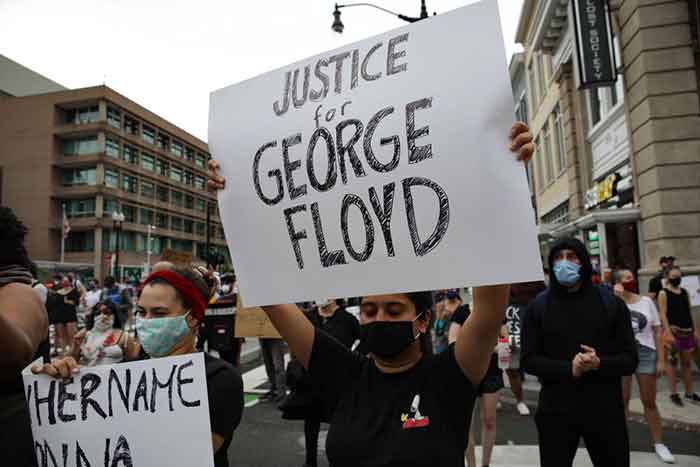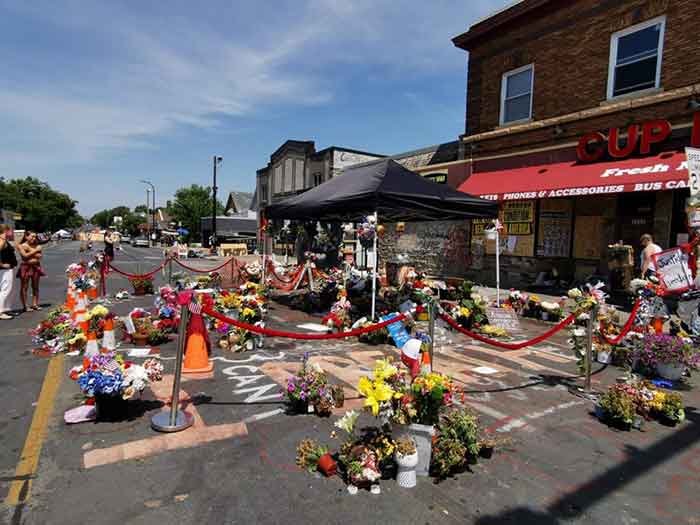
The murder of George Floyd, an African American (46), through an act of police brutality, has over the days seen a momentous global protest. People from parts of Europe, Asia Pacific, Africa, Arabian Peninsula and specially the US, witnessed several rallies condemning such an act of police violence, racial violence and ethnic minority discrimination. Such resentments from people also intensified on social media platforms. This incident has only brought forth the everyday structural problems of racism in our lives. In our own country, racism is experienced everyday through, racial narratives, appearance, language accents, racial colour, interpretations, radicalized emotions and stereotypes.[i] Our Dravidian population is mocked because of their ‘colour’ and their ‘language accent’, while our North Eastern population face racism for their racial image, language accent, racial narratives and so on. Such cultural and historical racism is specifically felt when they move out of their natives into a new region. In this article I would like to highlight on how racism has been worshipped, practiced and experienced, practically by all of us through our everyday affairs, and how normalising and internalising such acts can actually escalate to an incident such as that of George Floyd’s.
Understanding the Construction and Reconstruction of Racism
Racism varies according to gender, class, and sexuality. It is shaped by us and the state through our everyday meanings, discourses and ideologies. Starting from our first few socialising institutions, that is, the school. While reflecting back upon school curriculums, specifically that of CBSE and ICSE, there was no mention of racism in India. We were taught of apartheid, we were introduced to Nelson Mandela, we were also exposed to black oppression, but how many of us were exposed to racism against minority population in India? The curriculum should be questioned as it is the first instrumental tool which shapes the identity of an individual. When one of my friends in the University, confessed that he was never exposed to or was aware of the people from the North East before, this made me question the curriculums that preach to inculcate ‘diversity’.
It is true that racism has not received as much significance as casteism in India. Like Dipankar Gupta once remarked that “some have even been silly enough to equate caste and race”.[ii] It may also be due to this reason that the racial stratification has persisted to exist. As racial formation that occur within the hierarchical structure of systemic racism, ensures that the majority has advantage above the others, with minority at the bottom of hierarchy (Jacobson, 2015). Such unequal power relations have furthered inequality based on racism in India on distribution of resource and opportunities.
Being born and bought up in the hills of Sikkim and Darjeeling, many of us were not exposed to structural racism that we would be undergoing. As talking from a personal experience, I presumed to have been among the dominant group. I was early on exposed to and had further inculcated racist practices against the “madisays” meaning people coming from the plain regions into our state. Hailing from a small region of Sikkim, I was socialised into othering the “other” who were ‘different’ from us.
Treating people on the basis of their ethnicity, language and sometimes their religion, is also practised equally by us in our region. I can recall an incident where an eight year old daughter of a Bihari Muslim shopkeeper, had been raped by a few boys from the locality. The family had no relatives around, so instead of helping her, we were silenced. It became a hush hush topic. The family had to return back to their state, hurt and ashamed by the indifference, causality and the insensitivity with which the issue was taken up by ‘our’ people. To cite a recent incident where an article by Marina Rai, voicing her opinion on ‘Paatal Lok’ was also met with uproar from ‘our people’ where there were assumptions made that she was indulged with a ‘mainlander’. They went to the extent of questioning her morale. Such instances only further make us question our right to choice, independence and individuality which ‘our own society’ quite often has deprived us of. Such instances are equally an act of racism which reflects our intolerance towards diversity and towards exogamy.
I do not mean to avoid the cultural and historical power dynamics that come into play, where the North Eastern population has been at the receiving end. But this cannot be a reason to justify such racial brutalities that we being a majority in our respective states have indulged in. There are numerous such instances of racism unfolding in our own states towards the minority groups. We have also indulged in giving them a second class treatment, we have also made them feel like less of a human and we have also indulged in taking pleasure by mocking their identity. Such normalising and internalising racism towards a particular community is inculcated in us over the years by our immediate socialising agents.
After arriving at regions outside our own state or community, we also stand at the forefront of receiving racism. We are judged on the basis of our culture, history, food habits, lifestyle and our appearance. Over the years it appears that such discrimination is more on the basis of their non-acceptance of us as being equal Indians, rather than their ignorance of us. Violence against the North East population in major cities is something we get to hear of everyday. As it is just everyday, a person from the North East is discriminated, bullied, murdered and also raped.
However, there are only few instances such as that of Nido Taniam (a boy from Arunachal Pradesh who was a victim of racial brutality and was murdered in Delhi) that fuels momentum among people to realise that racism is a structural problem which needs attention. While we ignore the everyday underlining racism, that we ourselves become a victim of, or are indulged in.
Media has also furthered in promoting racism. A platform where viewers learn and feed on what is visually shown to them. Viewers uncritical of what is shown to them are bound to stereotype and homogenise a group based on how they are portrayed by the media. This is what the Muslim population have been a victim of, amidst the pandemic, the repercussion of which was for all of us to observe. I also witnessed how Muslims from my locality were asked to leave their rented business ventures, lest they would further spread Corona among ‘our’ people. Such instances also further shows how media is so easily feeding such people who are open to being fed.
The ‘racist memes’, circulating on social media before the outbreak of Corona in India, questioned the food habits, facial features and culture of a particular country which was spreading Corona. Infact, I also witnessed our own North Eastern people taking joy in circulating such memes. This was also the main reason why our North Eastern population was later seen as another agent of spreading Corona, while on the contrary the region witnessed the least number of cases.
So how are we to move ahead accepting racism and internalising it? How are we to move ahead, only stopping by to contradict and condemn racism, when an African American in the US, is murdered on racial lines? Floyd’s murder received global attention and a relook at the question of structural racism. But how are we to continue by being quiet, when someone just beside us are raped, bullied and discriminated on racial lines, with no powerful voice for dissent. I hope that this spark and a trigger on racism taking momentum lately, will also address the everyday racism that we take for granted. As the change which we all seek today, can only occur from the grass root level. So instead of merely indulging in showing solidarity to Floyd through ones Facebook and Instagram hash tags, it is also time to reflect upon how we as an individual can indulge in eradicating it. It is time we stop accepting and start questioning the everyday taken for granted racism and its practices prevalent in our society.
[i] Jacobson, G. (2015). Racial Formation Theory and Systemic Racism in Hip-Hop Fans’ Perceptions. Sociological Forum, Vol. 30, No. 3 , pp. 832-851.
[ii] Gupta, D. (2017, May 23). hindustantimes. Retrieved June 05, 2020, from Let’s talk about racism | Colour bias in India is colonial, not traditional: https://www.hindustantimes.com/india-news/let-s-talk-about-racism-racism-in-india-is-colonial-not-traditional/story-wLaZ7RPgFg35sur3w1y08H.html
iii. Haokip, T. (2020). From ‘Chinky’ to ‘Coronavirus’: racism against Northeast Indians during the Covid-19 pandemic. Asian Ethnicity , pp. 1-21.
Rinzing Ongmu Sherpa is a Doctoral Candidate at Centre for the Study of Social Systems (CSSS) at Jawaharlal Nehru University, New Delhi. Email Id- [email protected]
SIGN UP FOR COUNTERCURRENTS DAILY NEWS LETTER

















































